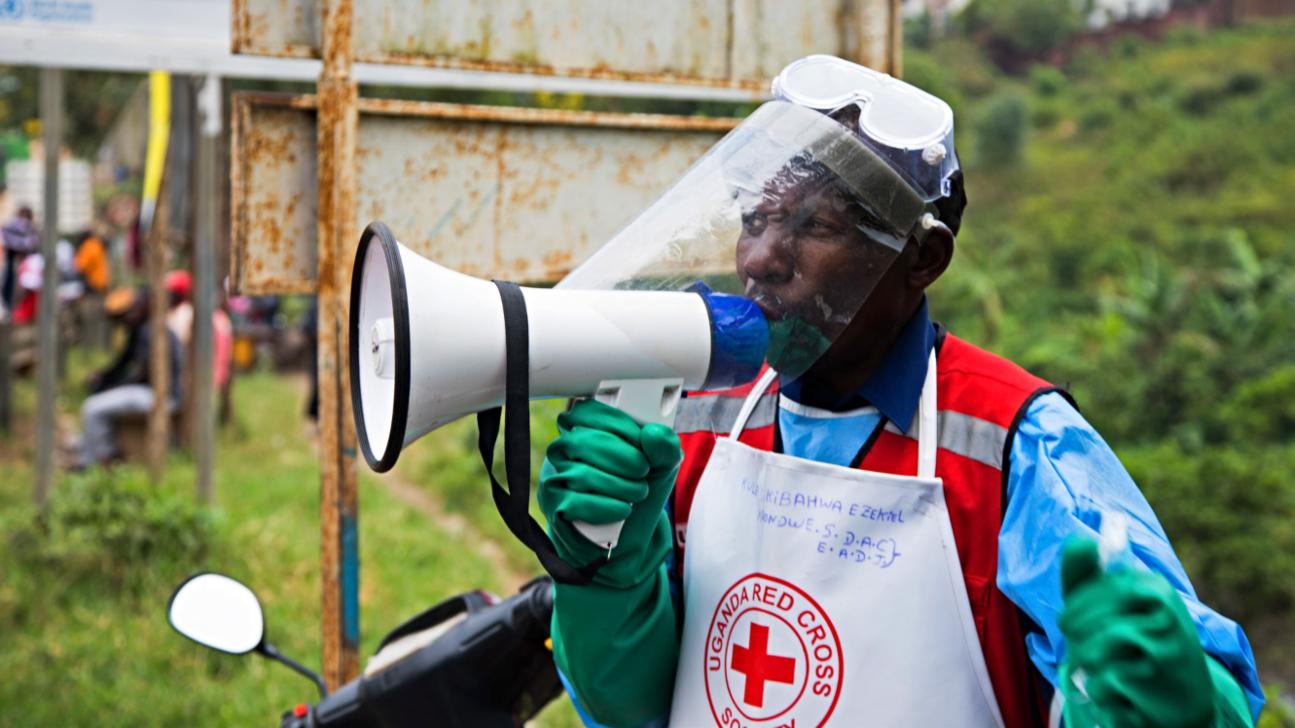Kenya’s reputation as the Silicon Savannah should mean it is well placed to shift its education sector towards effective virtual learning, in place as part of measures to contain the COVID-19 epidemic. But millions of pupils lack access to the required technology, and low-tech solutions remain vital in many areas.
Kenya made international headlines in late July when the government announced that all universities and tertiary institutions would remain closed until January 2021 due to poor compliance with COVID-19 regulations. This means that all learning institutions, ranging from kindergarten to university, will have shuttered their doors for two-thirds of the academic year, leading to over 18 million pre-primary, primary and secondary school learners from mid-March 2020 not benefitting from in-class instruction, according to the Ministry of Education. Additionally, several million university students have also faced a suboptimal learning environment even though they had better access to information communications technology.
This recent development stands in stark contract with optimistic news stories published back in March 2020 about how well prepared schools were to transition from classroom to online learning. In fact, the loss of almost a full academic year, however, will have devastating consequences for students and the whole education system, despite the decision being taken in the interest of safeguarding public health. Ending in-class instruction has exposed glaring learning inequalities across the socio-demographic spectrum. Moreover, the Ministry of Education stands accused of having wasted precious time, after a months long debate, in devising more sensible measures to ensure universal education.
Virtual learning in the Silicon Savannah
At first glance, learners should have been ideally placed to transition to a virtual learning environment given that Kenya is hailed as the Silicon Savannah that enjoys technological advantages within the East Africa region. The Communications Authority of Kenya estimates the mobile phone penetration rate at 116% of the population, with 22 million subscriptions having mobile broadband. Furthermore, there are 39.3 million data/internet subscriptions in Kenya that translates to an internet penetration rate of 83%.
But equitable access to reliable broadband remains elusive for Kenyan learners who live in a country classified as lower-middle income. Some universities partnered with mobile network providers to discount rates of mobile internet bundles. This arrangement, however, was not replicated across all tertiary institutions, and primary and secondary schools did not benefit from such arrangements. Moreover, it remains to be seen if the 35 internet balloons (providing 4G coverage) launched by Google’s sister firm Loon over Kenya’s airspace can bridge the digital divide between rural and urban areas. While a single balloon can serve about 1,000 users on the ground, many learners, especially in rural areas, lack access points or devices required for virtual learning.
Despite the high number of mobile phone sales as a proportion of the population, a lack of access is also demonstrated by a recent Afrobarometer report that states that only 40% of surveyed Kenyan households owned a phone (though without internet access) and no computer, whereas another 17% do not own a phone or a computer. Additionally, Kenya ranked below a 34-country average on the Composite Index of Remote-Learning Readiness computed by Afrobarometer. Finally, there is the largely ignored fact that popular online learning platforms like Google Classroom are a violation of Kenya’s Data Protection Act since student data are hosted on servers located outside Kenya.
Cognizant of the fact that virtual learning remains inaccessible to millions of pupils enrolled in public schools, a more low-tech approach was adopted to ensure ongoing curriculum delivery. The Ministry of Education, in collaboration with the Kenya Broadcasting Company, broadcasted educational radio programs in English for around five hours per day from Monday to Friday. The programs provided lessons in English, Kiswahili, Mathematics, Science, Hygiene and Nutrition, Christian Religious Education, Social Studies, Life Skills and Civic Education. The Kenya Institute for Curriculum Development (KICD) operates its own channels called Edu TV and Radio and also broadcasted free lessons. The television broadcasts are available on YouTube and the Edu TV Kenya channel currently has 9.44K subscribers. Finally, KICD approved materials for upload onto the Kenya Education Cloud.
Education providers were undoubtedly ill prepared for the closure of schools in March and they had little time to adapt to the new environment inaugurated by the COVID-19 pandemic. However, education stakeholders should use the past trimester as a learning experience because it is vital to meet educational objectives and minimize the learning gap, which the World Bank’s senior education specialist in Kenya estimated to be almost three years of lost learning.
Next steps for children’s education
So what has to be done between now and the planned reopening of classrooms in January 2021?
First, there is a need for parents to acknowledge that they play a significant role in the new learning environment, regardless of whether their children are using virtual learning or other remote learning channels. Even with a good technology platform and content, parents cannot be hands off. If they have children doing virtual learning, parents have to ensure that their children go online, complete assignments, make up for deficient teaching, or assist them in creative work such as taking photos or videos of project work. For parents in the low-income segment or working in the informal sector, there are sadly formidable challenges to ensure their children are meeting basic quality standards. Even if parents opt out of a formal education for the children, they must ensure that homeschooling, for example, adheres to an accredited curriculum.
Second, the government needs to urgently create conditions for pupils to safely return to a classroom setting early next year. With no signs of the pandemic abating in Kenya, it is unrealistic to bank on virtual learning or delivering learning through television and radio broadcasts. There simply is no truly inclusive alternative to in-person instruction, or alternatively hybrid learning, which means more facilities need to be constructed so that social distancing guidelines can be followed. Kenya is fortunately blessed with a favorable climate so that classes can be held outside of buildings. Moreover, evidence suggests that transmission rates could be lower in open spaces.
Third, a thorough review of the data generated this past trimester should take place. Schools that conducted virtual learning generated large amounts of data on attendance, participation, homework assignments and final exams. What do the data indicate? Did public schools, which follow the Kenyan national curriculum, and private schools, which are mostly modeled off a British curriculum, achieve learning outcomes for each respective grade? As difficult as this past trimester was, a forensic analysis of the data can yield incredible insights that would allow for an optimisation of the learning environment at the system and individual level. The Ministry of Education should also conduct a thorough review of how learners fared with educational broadcasts and how they utilised the Kenya Education Cloud. Finally, the university system probably gathered the most amount of data since all students transitioned to virtual learning. This kind of extensive review will hopefully avoid a repetition of this year’s decision to scrap the whole academic year, which unduly punishes and frustrates learners.
While the last trimester unquestionably resulted in widespread disruption to learning that could have devastating effects on Kenya’s development trajectory, the experience should be used to think about opportunities and even to reconceptualise the notion of education in the 21st century. There is still a chance for Kenya to capitalise on its Silicon Savannah moniker by transforming its educational system into a digital success story.
Photo: Erik (HASH) Hersman (CC BY 2.0)






This article says it as it is. A great piece to read and share. I wish George Magoha can read this too. He seems more clueless than the learners.